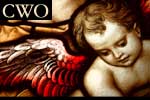Friday, October 3, 2025
Altar linens and Liturgical sewing and embroidery
I have made several sets of clergy stoles for my retired pastor husband. I was asked to help with some new linens for the altar and communion at the church where he is now filling in while they call a new pastor. I have done this once before, and I learned a few new things this time. In an effort to preserve my process, and share the resources I used in case I need to do it again, I am going to document it here.
The altar guild ordered several yards of a cotton linen blend fabric that was 60 inches wide from www.churchsupplies.com. It is listed under fabric by the yard, linen cotton. It was $68 a yard, and they consulted on the phone and shipped to Alaska quickly.
I used the dining room table and my gridded cutting mat, a long tape measure, and a metal t-square to measure and cut the fabric. There are 2 cloths to cover the altar, called Fair Linen. In my research I found that it is meant to remind us of the linen that they wrapped Jesus in for the grave, and some include an embroidered cross in the front center and small ones on all 4 corners to stand for the wounds in His hands, feet and side.
Once the fabric is cut, I took it to the ironing board, which I had covered with a piece of woven gingham fabric to help with keeping the edges straight.
The hems are much easier to fold correctly if you use a soft surface, a long straight ruler and some kind of blunt pointed object and "score" along the turning line. The ruler goes just over the outside edge of the fabric to hold it down while you are making a "dent" in the edge.
After scoring the hem lines, use a hot iron without steam, and carefully fold the hem in and iron along the crease. I was turning in 1/2 inch first, and then 1 1/2 inches, and I did both folds one after the other. When you get to the corners, press up both edges so you can see the folds.
The next step is to mark the corners to miter them. There are instructions and videos online. I used a ruler and a pencil, since it was going to be on the wrong side and would not show, rather than trying to remove other kinds of markers. The edges have the first 1/2" fold in place, and a mark is made right at the edges, 3 inches from each corner. Then draw a line across the corner, through the fold lines. The fabric is folded so the edge marks line up, pinned to hold everything in place, and stitched across the pencil line. Check first to make sure the corner is correct, and then use scissors to trim the edges to remove bulk, and use a point turner to make the corner sharp and neat, and pin the hem down. Repeat for all 4 corners.
I took the whole thing back to the ironing board and checked measurements and ironed the hems again all the way around and pinned. Then I used some foam tape on the machine to make sure my stitching would run evenly right along the inside edge of the hem. I stitched on the right side. I used extra fine cotton thread that I had in my supplies.I also marked the place where I needed to turn the corner by measuring as I came to them and placing a pin at the spot.
I hold onto the fabric with both hands, gently, and let it feed through the machine without pushing or pulling, but all the handling of the linen can make the hem section stretch a little, and your hands will help control any fullness.
After the hemming was all finished, I pulled the threads to the back side, tied the threads into a knot close to the stitching, slid them into a self threading needle, or one with a large eye will work as well, and buried the threads inside the hem and clipped off the ends.
The final step was machine embroidery, which was another whole project that I didn't document. I used a ruler and the iron to mark folds where the designs needed to be, hooped, stitched using white thread and several layers of tearaway stabilizer underneath and washaway on top.
My favorite trick to remove the washaway stabilizer that doesn't tear off easily is to spray it lightly with water, place a paper towel on top and run the dry iron across the paper towel, and then pull the towel away and the rest of the stabilizer comes off with it.
The final result was 2 long fair linens, 2 large rectangles for covering the communion ware on the altar, and 4 small squares to go underneath the communion vessels. They all have 1 1/2 hems, mitered corners, and embroidered crosses.
My favorite source for information and supplies for clergy stoles and liturgical sewing. Elizabeth Morgan's book Sewing Church Linens is available here and is a great wealth of information as well as my reference for this project. www.churchlinens.com
The fabric I used was cotton linen blend from www.churchsupply.com
Most of the embroidery designs I used came from Windstar Embroidery and were in the sections Christian and vintage. They all stitched out very well. www.windstarembroidery.com
Love and Best Stitches,
Kathy
Subscribe to:
Post Comments (Atom)








































No comments:
Post a Comment